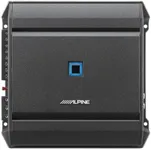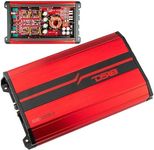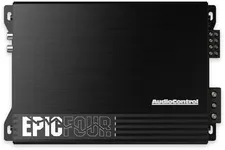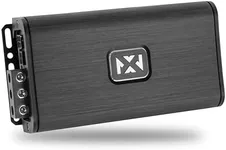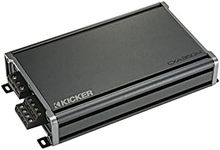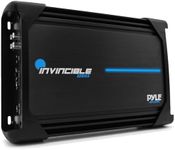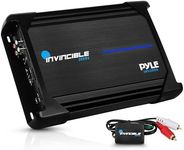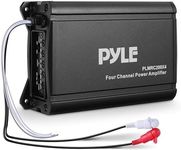Buying Guide for the Best 4-Channel Car Amplifiers
Choosing the right 4-channel car amplifier can significantly enhance your car audio experience by providing better sound quality and more power to your speakers. A 4-channel amplifier is designed to power four speakers, making it ideal for a full-range audio system in your vehicle. To make an informed decision, you need to understand the key specifications and how they relate to your needs and preferences.Power Output (RMS)Power output, measured in watts RMS (Root Mean Square), indicates the continuous power the amplifier can deliver to your speakers. This spec is crucial because it determines how loud and clear your music will sound. Lower power output (e.g., 50 watts RMS per channel) is suitable for factory or low-power aftermarket speakers, while higher power output (e.g., 100 watts RMS per channel or more) is ideal for high-performance speakers that require more power to deliver optimal sound quality. Choose an amplifier with a power output that matches or slightly exceeds the power handling capacity of your speakers for the best performance.
Total Harmonic Distortion (THD)Total Harmonic Distortion (THD) measures the amount of distortion the amplifier introduces to the audio signal, expressed as a percentage. Lower THD values (e.g., below 1%) indicate cleaner and more accurate sound reproduction. If you prioritize sound quality, look for an amplifier with a low THD rating. For most listeners, a THD of 0.1% or lower is ideal, ensuring minimal distortion and high-fidelity audio.
Signal-to-Noise Ratio (SNR)The Signal-to-Noise Ratio (SNR) measures the level of the audio signal compared to the level of background noise, expressed in decibels (dB). A higher SNR value indicates a cleaner and clearer sound, as there is less background noise. For a high-quality listening experience, aim for an amplifier with an SNR of 90 dB or higher. This ensures that your music will be heard clearly without interference from unwanted noise.
Frequency ResponseFrequency response indicates the range of frequencies the amplifier can reproduce, typically measured in Hertz (Hz). A wider frequency response range (e.g., 20 Hz to 20,000 Hz) ensures that the amplifier can handle both low bass and high treble frequencies, providing a full and balanced sound. If you enjoy a wide variety of music genres, look for an amplifier with a broad frequency response to ensure all aspects of your music are accurately reproduced.
Crossover FeaturesCrossover features allow you to control the frequency range sent to each speaker, ensuring that each speaker receives the appropriate frequencies for its design. Built-in crossovers can include high-pass filters (HPF) for tweeters and midrange speakers, and low-pass filters (LPF) for subwoofers. These features are important for optimizing the performance of your speakers and preventing damage from receiving frequencies they cannot handle. Choose an amplifier with adjustable crossover settings if you want more control over your sound system's performance.
Input and Output ConnectionsInput and output connections determine how the amplifier integrates with your existing audio system. Common input options include RCA inputs for connecting to aftermarket head units and speaker-level inputs for connecting to factory head units. Output connections should match the type and number of speakers you plan to power. Ensure the amplifier has the necessary connections to integrate seamlessly with your current setup and any future upgrades you might consider.
Size and InstallationThe physical size of the amplifier is important for installation purposes, as it needs to fit in your vehicle without causing any obstructions. Measure the available space in your car and compare it to the dimensions of the amplifier to ensure a proper fit. Additionally, consider the installation process and whether you have the necessary tools and skills to install the amplifier yourself or if you will need professional assistance. A compact amplifier may be easier to install in tight spaces, while larger amplifiers may require more planning and effort.
